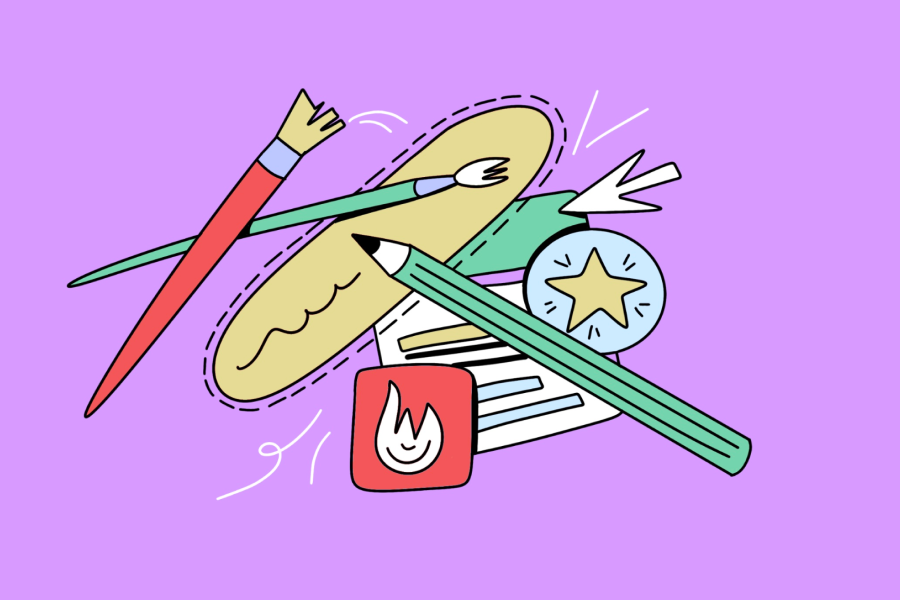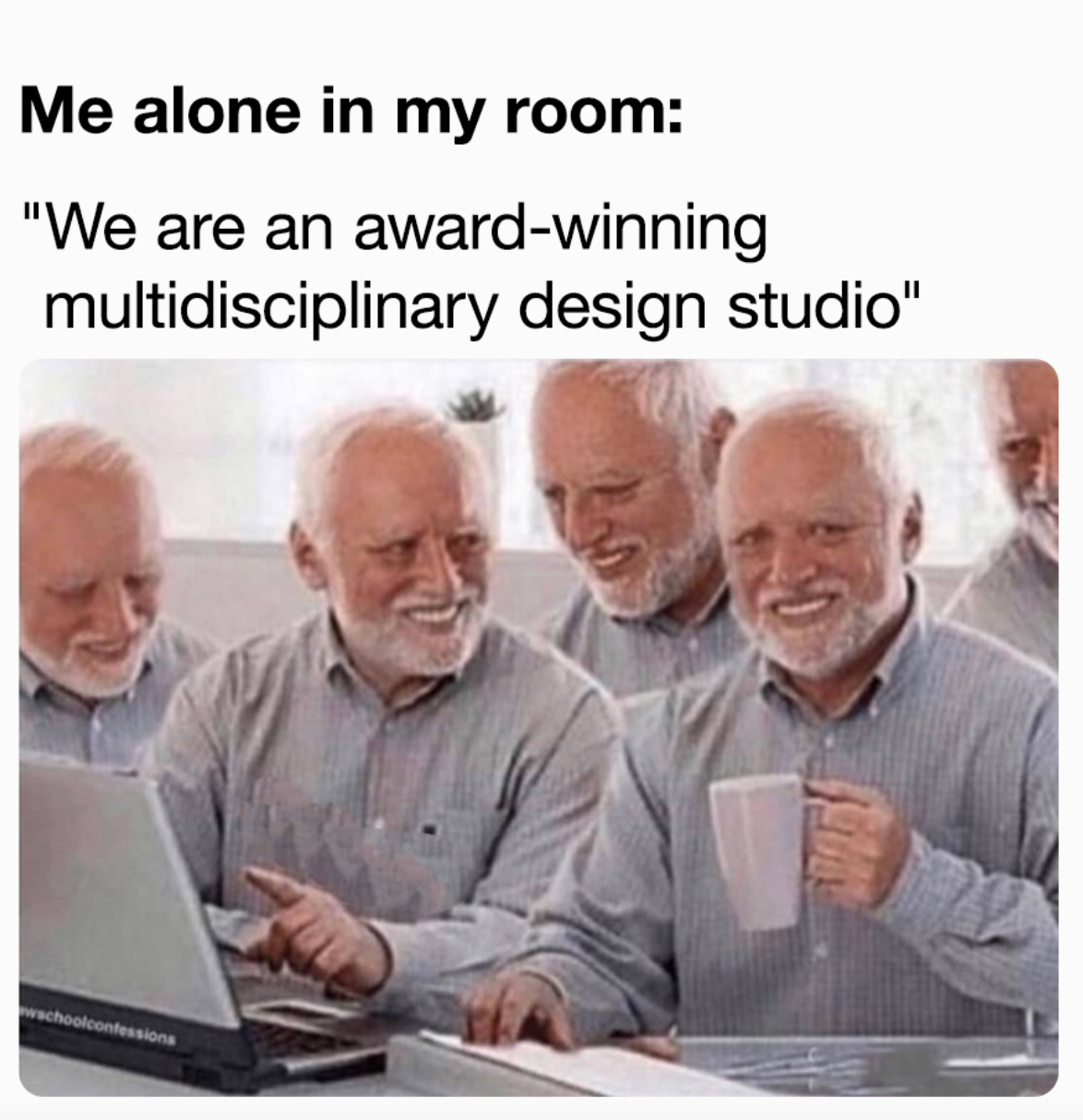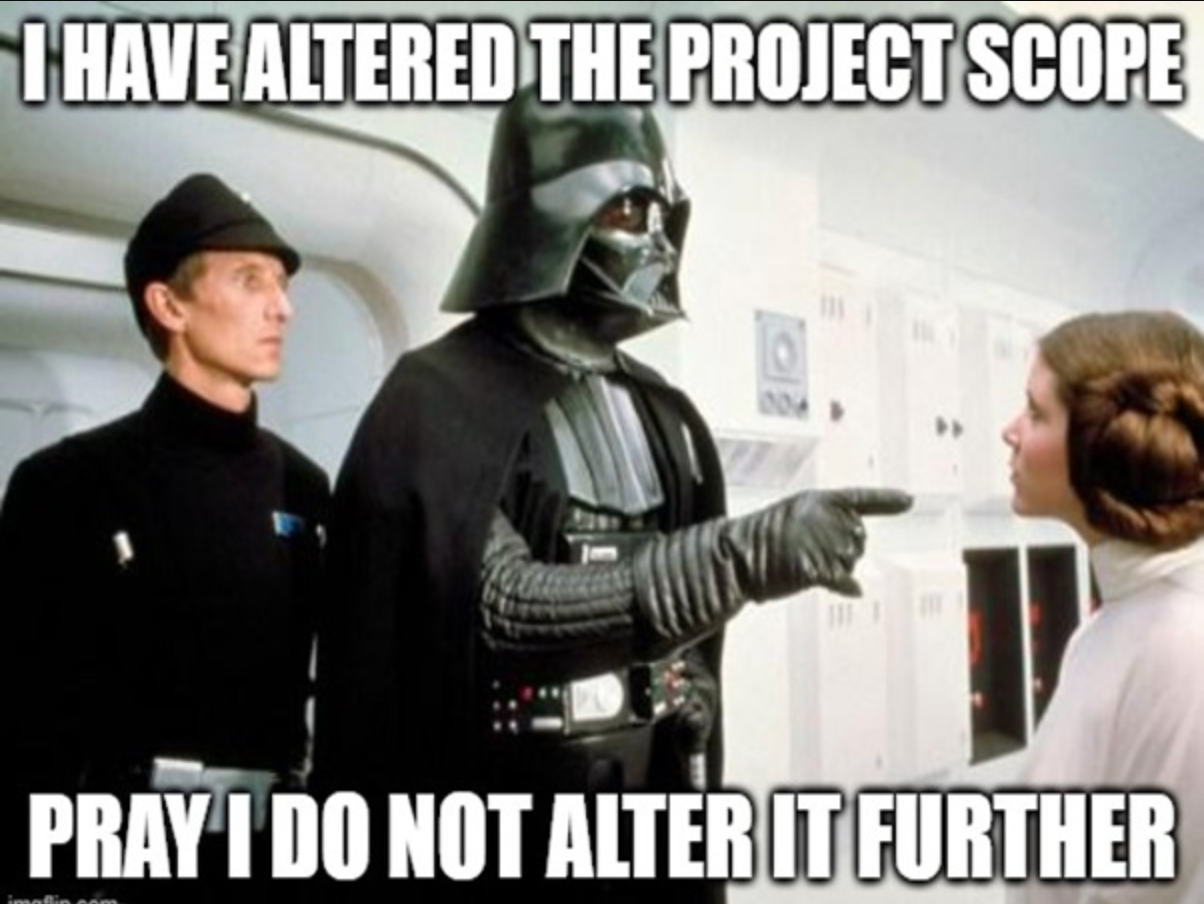A Freelancer’s Guide to Starting Your Own Design Studio (Without Burning Out)
A practical guide to turning your freelance practice into a design studio with structure, systems, and steady growth.
November 15, 2025
November 14, 2025

Key Points
- A design studio is a structure for doing creative work consistently.
- If you decide to start your own design studio, start by establishing clear definitions of your services, pricing, and process early on.
- Protect your time and also make your work repeatable through online platforms, templates, and clear communication.
- Add people, projects, and complexity only when you and your systems are ready for it.
Most creatives start out solo. You take on projects one by one, go it alone, and figure things out as you go. But at some point, the work itself forces a choice: do you keep freelancing, or do you run your own design studio? A studio isn’t just a cooler title. It’s a business. It’s a setup, a process, a way to deliver creative work with consistency.

Is starting a design studio right for you?
First of all, what is a design studio? It doesn’t have to be a huge agency with 20 employees. Instead, they can be one person or a small team, and can specialise in fields like graphic design, branding, UI/UX, packaging, illustration, product design, or even fashion. A studio means you’re not just selling random one-off projects anymore, but instead building a business around a repeatable creative process.
If you’re wondering if launching one is right for you, keep reading.
I began freelancing because I enjoyed the independence, but I established the studio because I understood I was developing my own design perspective. The birth of Mermaid Way occurred when I abandoned seeking approval from others to create designs which women actually required.
{{Julia Pukhalskaia}}
Understand the difference: freelancing vs. running a studio/agency
When you freelance, you’re hired to “do the work.” Clients come with requests, you deliver the output, and every project starts fresh. With studios, things work a little differently. You’re not just producing design, you’re also deciding how the project will run, step by step, as opposed to waiting for the client to tell you what to do. When you’re running a studio, clients are not just after your time, but also your approach, your method, and your judgement.
Why I formalized: I saw too much demand and not enough people doing it right. Freelancing let me cherry-pick projects, but formalizing meant I could build a team of specialists and take on the comprehensive support work clients actually needed — not just one-off website builds. The company name came from realizing I needed something memorable that would stick in people's heads during networking events.
{{Craig Flickinger}}
Be clear about your goals
Before you set out on your path to launch a design studio, you need to decide why you want one—maybe it’s freedom, an opportunity for growth, or a chance to run your own business. It’s also important to remember that success looks different to everyone. Not every studio needs to become a full agency with a big team and a fancy office.
I needed to move away from accepting all requests because I wanted to protect my studio's mission. The survival of freelancers depends on their ability to adapt to new situations. The studio achieves its strength emerges from clear direction instead of being able to adjust to every situation.
{{Julia Pukhalskaia}}
Know how to balance creative work with company admin
If you’re freelancing right now, you’ll already know that doing “the thing” itself is only one part of your job; you also have admin to deal with, like contracts, invoices, or proposals. In a studio, the volume of admin grows exponentially. You’ll need to manage timelines, coordinate staff or contractors, document decisions, and protect margins. If you hate this part, studio life might frustrate you.
What you need to start your own studio
So, you decided to take the plunge and start your own studio. There are several things you need to do, and we’ll cover each of them below.
Skills, services, and a simple offer
A studio doesn’t need to offer everything. While it’s tempting to do everything when you’re first starting out, having your own niche is just as important for a studio as it is for a freelancer.
Think about what gets you hired today: brand identity, packaging, UI/UX, photography, motion, just about anything, and turn it into a clear offer for the customer. Your job is to make it simple for clients to understand what they can buy from you and why you’re the best choice for that specific thing.
Legal + money basics
You don’t need to become a lawyer yourself to open your design studio. Register your company (whatever the simplest legal form is in your country), open a business bank account, and separate your money from your personal life (something you’re likely already used to doing from your freelancing days!).
The next step is sorting out your financial rules. At this point, you just need clear terms. Don’t work without a contract, think about whether you’ll require a deposit, consider what payment terms you’ll offer to clients, and how you’ll invoice them. Later, when you bring in help or hire someone, these rules will be their system too.
Your delivery structure
Studios don’t “start designing” on day one; they follow steps. Even a simple process makes you look 10 times more professional: scope the project, agree on the milestones, decide how feedback will happen, and define what “done” means. Write this down somewhere. Share it with your clients. Basically, doing great creative work is only one part of the equation; doing it in a way that doesn’t depend on chaos or improvisation every single time is just as important.
Check out this video on starting your own design studio:
Set up how you run projects (so they don’t run you)
Planning projects as a freelancer is a little different from doing so when you have your own design studio. Consistency matters more than speed, and clients need to know what’s happening next. All this means that you need a structure that protects your time, sets expectations with clients, and keeps things from turning chaotic. And most importantly, when your process lives outside your head, it becomes something other people can follow too.
A repeatable project process
Start by designing a roadmap for the lifecycle of a project: how it moves from idea to delivery. An example of this could be something like a short discovery call with the client to clarify goals, then a concept round, then one or two structured feedback rounds, then final delivery. Decide in advance how approvals work, how clients give feedback, and exactly when changes become “extra”. By implementing a system like this, you’re making sure that every project follows the same path.
Your first hire changes everything about how you work. When I brought on that first employee, I didn't have clear processes documented — I just had "how Dan does it" in my head. I should have written down my approach to program verification, client feedback loops, and construction support before trying to teach someone else. It would've saved us both six months of frustration.
{{Dan Keiser}}
Tools that keep work moving
You don’t need complicated software to run a studio, but having the right tools makes work smoother. Here’s a short list of basic tools to get started:
- A project management tool (something like Notion or Trello)
- A platform to invoice your clients (FreshBooks or even PayPal)
- If you’re billing hourly, a tool to track time (Toggl or Harvest)
- A tool to track your money and spending (check out our list of accounting platforms for solopreneurs)
What tool you use doesn’t matter. In fact, you could even do everything in a spreadsheet at first. What matters is that you pick a setup and stick to it. And if you bring in more tools later, make sure they connect to each other, so you’re not copying information back and forth manually.
Templates to create once and reuse
Templates can be a lifesaver, no matter if you’re just starting out or your design studio has been around for years. If you write your proposals, your invoices, your contracts, your weekly emails once, and then personalise them as needed, you’ll save hours of time to spend on actual work. And if you’re using an email service platform, they’re likely to have a gallery of ready-made templates you could adapt for your own needs.
How to find, win, and keep clients
In this section, we’ll cover how to find (and keep!) clients for your design studio, how to pitch and make sure projects run smoothly, and what boundaries to set.
Start with your network
Finding new clients sounds a little intimidating, right? The good news is that you don’t need to start from scratch, especially if you were a freelancer in the past. Begin by reaching out to your past clients, colleagues, or even friends who know what you do. Let them know you’ve formalised your work into a studio and explain what’s different now: clearer process, bigger capacity, or a specific niche. Don’t forget to share your updates on social media like LinkedIn.
Avoid buzzwords or vagueness when describing your studio or pitching; instead, try to be as specific as possible about what you offer. Let’s imagine you specialise in branding for small and medium businesses. Your pitch could say something like, “I help small lifestyle brands refresh their visual identity without losing their core audience.”
Positioning
Positioning means choosing the kind of projects you want to be known for, and also the confidence to reject the rest. Not every client is your client, either, when you’re running a studio. And I’m not just talking about those with objective red flags either.
That might mean focusing on one industry (like lifestyle brands or tech startups) or one service (like packaging or UX). But it also means defining how you work, like your pace or your process, which I’ve already mentioned above. The clearer you are, the easier it is to find clients who are a good fit.
Another part of your studio positioning is how you present your offers. Clear, simple service tiers make it easier for clients to understand what they’re buying and for you to stay profitable. It also helps clients feel more in control.
Communication rules
It’s your job to decide how often clients hear from you, when feedback happens, and what’s included in the project scope. Weekly updates or progress emails help avoid surprises and make you look organised even when things get busy.
The importance of maintaining boundaries should have been explained to me earlier. Our studio exists to serve women who lead their businesses as women because we maintain our independence from being "nice" or constantly available. Creative energy requires space to thrive, which means we must establish contracts and timelines while respecting our natural work rhythm.
{{Julia Pukhalskaia}}
Another important part of communication is boundaries, which is something else you need to establish early on. You can’t produce good work if you’re replying to messages at midnight or redoing a project for the thousandth time (scope creep is a silent killer!). You can define your studio’s boundaries by setting clear rules about response times, revision rounds, and approvals.

Stuck with a client who’s a bad match? Here’s how to let them go professionally.
Running your studio like a business
So, this part is about structure: how to handle money, hire help, and keep things running sustainably. Maybe it’s not the funnest bit of running your own studio, but when you start managing cash flow, setting processes, and thinking about growth, it stops being a side hustle and becomes a real business.
Cash flow 101
As a freelancer, I charged per project. As a studio, I had to shift to retainer-based support and ongoing SEO work — that's what actually scales. The other shift was realizing I needed to give away value upfront. We started offering free video audits of potential clients' websites, which sounds counterintuitive, but it built trust faster than any sales pitch ever did.
{{Craig Flickinger}}
What Craig describes above is the realisation that a studio needs systems in place to make money and have regular cash flow, rather than relying on sporadic projects. There are several steps you can take to make sure you don’t end up with no money unexpectedly. Here are a few of them. And don’t forget, all of these have to be stipulated in your contract with your client!
- Ask for deposits. Always take an upfront payment before starting work; something like 30–50% is standard. It filters out unreliable clients and secures your time.
- Offer retainers. If you’re doing a lot of repeat work for the same client, you could turn it into predictable income through retainers. A retainer means that a client pays a fixed amount every month for a set number of hours or deliverables. Retainers are not just a steady income; they’re also scalable. The more you have, the stabler your studio becomes.
- Set payment schedules. Split big projects into stages (start, midway, delivery) so you’re never waiting months for the final payment. This is what we call milestone payments.
- Handle admin early. Contracts, invoices, and follow-ups aren’t creative, but they keep your business healthy. Do them first, not when things go wrong.
If the shift from freelancing to running your own business is too difficult financially, consider hiring an accountant to help you make sense of things as you’re getting started.
When to partner or build a team
Don't hire generalists when you're small — hire specialists you can't afford to be without. My team handles specific things (design, dev, SEO) better than I ever could alone, which means I can focus on the client relationships and business development that actually require *me*. And document your process while you're still doing it yourself — I didn't, and training that first specialist was painful.
{{Craig Flickinger}}
This is probably the biggest change from freelancing to running your own business. You’re used to working on your own, and bringing on another person isn’t always easy. Maybe you’ll even feel frustrated because you’ll likely spend a lot of time explaining things to your new hire. But delegation and trust are a huge part of being a business owner, and they’re what turns your studio into a scalable business. Start by hiring people who specialise in things you’re not great at yourself, and don’t forget to document everything.
The biggest shift for me was learning that staying involved in every project phase wasn't about control — it was about building systems that let me be present without becoming the bottleneck. I had to shift from "I'm the architect doing everything" to "I'm leading a team that delivers excellence." The hardest part was trusting someone else to interface with my clients.
{{Dan Keiser}}
Sustainable habits
Running a business isn’t easy, and things are particularly difficult for small business owners (which you’ll be, once you launch your studio). Research shows a mixed picture. While most (88%) entrepreneurs describe their satisfaction as medium or high, 76% also say they deal with medium or high levels of stress in their day-to-day work. Nearly one in five (17%) say they regularly feel anxious, burnt out or exhausted.
So, this means that you have to schedule rest time, and not to take on too many projects you can’t handle. Don’t worry about needing to take a break. A studio that never stops isn’t a successful one, it’s a tired one. After all, your creativity is the driving force behind your design studio, and nobody can be creative if they’re exhausted.

Grow on purpose (not by accident)
When you grow, you’ll have more clients and bigger projects. But that’s not all there is to it; a crucial part of sustainable growth is getting your systems in place, so that this extra work doesn’t drive you crazy. Once you’re comfortable with your setup, you can scale more easily and take on more work without burning out.
Don't formalize because you're busy — formalize when you have a repeatable process worth scaling. If you can't explain your design approach and client collaboration method clearly enough that someone else could execute it, you're not ready to build a studio. Also, hire people who want to grow with you. One of my team members couldn't find an internship anywhere for a year — I gave him a shot, and he's become invaluable. Culture matters more than credentials when you're small.
{{Dan Keiser}}
Productised services vs. custom work
When your studio is new, custom work helps you learn what clients need and where your strengths are. However, as you grow, quoting every project from scratch starts eating into your time, and at this point, you should look into productised services. These are clearly defined offers with fixed pricing and deliverables, so clients know exactly what they’re getting before they even contact you.
What I wish I knew: that you need defined service packages before you scale, not after. I spent the first year quoting custom prices for everything, which meant every client conversation took forever, and nothing was profitable. Now we have clear tiers — Basic Shopify at $X, Advanced at $Y — and clients can actually make decisions. Also, pick one thing to give back early. We donate to Make-A-Wish now, but I should've built that charitable component into our model from day one — it's become a differentiator clients remember.
{{Craig Flickinger}}
Productised services make your business easier to run, but custom projects keep it interesting. So, you should consider offering both; they serve different purposes.
Repeat and refine what works
Once you’ve found your groove and rhythm, it’s time to replicate and refine the things that work well. For example, pay attention to which projects go smoothly and which clients come back. This will allow you to see what works fine as it is, and what requires adjustments. As time goes on, you can even expand by taking on bigger projects, trying new tools, or even offering unexpected services.
We handle residential, commercial, and mission-minded projects. We've even done documentation for fire restorations — work people don't expect from our portfolio, but that keeps us diverse and challenged.
{{Dan Keiser}}
Metrics to watch
You don’t need a confusing, full-blown analytics setup to understand the data about your studio, but you definitely need to be tracking it.
Many of the metrics you should be keeping an eye on are available through the tools we discussed earlier.
For example, pipeline tracking often happens in CRM systems or spreadsheets.
Utilisation rate, which is the percentage of your available working time that’s billable, can be monitored on time-tracking platforms I mentioned earlier in this article. According to Promethean Research, you should aim for a utilisation rate of 70-90%, although it’s different for each industry.
You can see your profit per project with your accounting tools. Generally, the higher your profit margin, the better, and usually a figure of 15-20% can be considered healthy. This metric also varies depending on your industry, but for advertising and design, it can reach 30%.
Another metric for you to consider is lead conversion rate. It basically tells you how many inquiries become paying clients. This is another statistic you can get from your CRM system.
Conclusion: build slowly, stay intentional
Your work is ready for a studio environment when you experience the pull to move from freelancing. A studio beyond its legal status represents the complete environment that you welcome others to experience.
{{Julia Pukhalskaia}}
So, that’s all the theory behind getting started with your design studio. If you’re considering pivoting from freelancing to launching a studio, remember that finding the rhythm that works for you is more important than getting big really quickly. Get started with one clear offer and a few great clients. Keep refining your process and stay close to the kind of business you actually want to run.
FAQ
We are here to ease your working routine
Whether you're freelancing or a full-time contractor, we simplify the working process, putting you in control.
Try it free




Freelancers and contractors work in different ways, even if the legal side looks similar. Knowing the difference matters.

A practical guide to raising your rates and communicating the change clearly, professionally, and without unnecessary stress.

Check our guide about the best side hustles with a list of 15 second jobs at night from home for you to make more money every month.

.JPG)